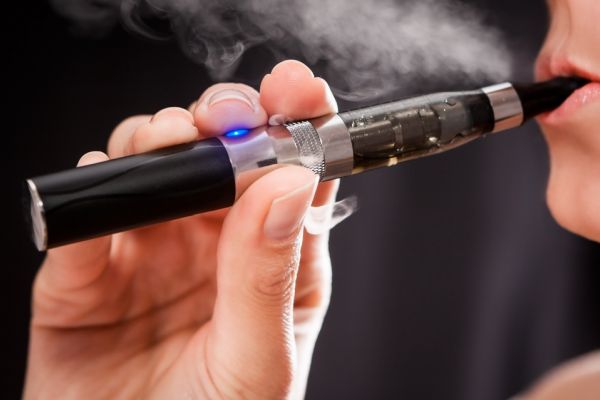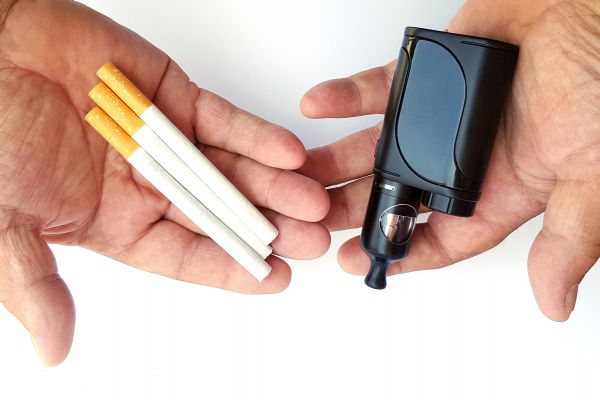Some of the fastest-growing methods of nicotine delivery are electronic products — e-cigarettes and devices such as IQOS, which heat tobacco without burning it. But because many of these devices are so new, little is known about the benefits — and the risks — of using them.
Maciej Goniewicz, PhD, PharmD, Department of Health Behavior, and his colleagues recently reviewed studies that estimated respiratory and cardiovascular outcomes among former smokers who switched to using e-cigarettes, compared with current smokers of traditional cigarettes.
Dr. Goniewicz notes that while e-cigarettes are widely promoted as products that reduce harm for smokers, and smokers commonly perceive them as less harmful than combustible cigarettes, the question remains: To what degree do e-cigarettes reduce harm for former smokers of traditional cigarettes who switch to the electronic version?
Handful of studies show consistent results
Just six studies met the criteria to be included in the review. Of these, three reported on respiratory outcomes — chronic obstructive pulmonary disease (COPD), chronic bronchitis, emphysema, asthma and wheezing — and three reported on cardiovascular outcomes — stroke, myocardial infarction and coronary heart disease.
Though the review included a small number of studies, it provided consistent results.
“Those who completely stopped smoking regular cigarettes and switched to e-cigarettes showed about a 40% reduction in respiratory risk,” Dr. Goniewicz says. “But we haven’t noticed a similar reduction in cardiovascular risks, and we don’t have any data right now on cancer risk, though we suspect the effect on cancer reduction could be significant.”
Further studies are needed to better evaluate e-cigarettes as harm-reduction tools for smokers, he notes, adding that future research also needs to designate how long it takes for e-cigarettes to reduce patients’ risk of respiratory and cardiovascular health problems.
“Unfortunately, we don’t know enough about this yet,” adds Dr. Goniewicz. “There were a limited number of studies, and most of those looked at only the short-term effects of switching from regular cigarettes to e-cigarettes. Most of the studies didn’t specify how long ‘short-term’ is. It could be one month, or it could be one or two years. There is no controlled study yet.”
Using e-cigarettes exclusively brings benefits
Until then, he and his team recommend e-cigarettes as less harmful than traditional cigarettes and most likely safer than heated tobacco devices such as IQOS, which still contain tobacco. IQOS is popular in Japan and Korea, but not as widely available in the United States.
“E-cigarettes contain a liquid solution of nicotine, but no tobacco,” he says. “Heated tobacco devices do contain tobacco. That’s a really important difference.”
He also advises patients to not use chewing tobacco, which contains nicotine and numerous toxicants that cause oral cancer.
“Preliminary data suggests e-cigarettes are less harmful than heated-tobacco products. We have data from clinical trials that show e-cigarettes may be effective in helping smokers quit smoking, and more effective than nicotine patches and nicotine gum.”
Never miss another Cancer Talk blog!
Sign up to receive our monthly Cancer Talk e-newsletter.
Sign up!However, he notes, many traditional smokers don’t fully transition to e-cigarettes.
“Unfortunately, the data show that most smokers experiment with e-cigarettes and try them while continuing to smoke combustible cigarettes,” he says. “We call them ‘dual users.’ In this group, we don’t see any of the benefits of e-cigarettes, and not enough to make changes in their respiratory and cardio systems. We see benefits only when people switch completely.”



